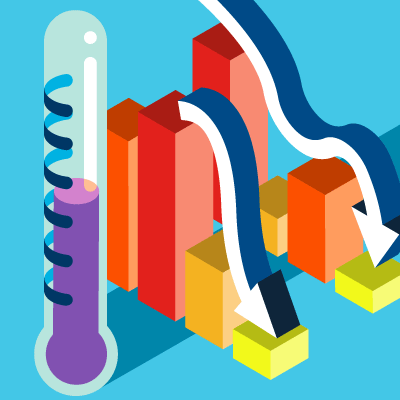This year, 2017, marks the 30th anniversary of AIR Worldwide and of the beginning of catastrophe modeling. Back in 1987, after a few quiet decades of natural catastrophes in the United States, the idea of business-shuttering losses seemed like a remote possibility to most in the insurance industry, and the need for catastrophe modeling was met with skepticism. Just five years later however, Hurricane Andrew jolted the insurance industry to its core. For companies managing risk based on historical experience, Andrew’s insured loss tally of more than USD 15 billion had previously been simply unimaginable.
One of Hurricane Andrew’s many lasting legacies is the widespread recognition of the potential for unprecedented losses from rare but powerful natural disasters, and that losses that could not be anticipated using traditional actuarial approaches. Catastrophe modeling quickly became an established discipline.
Other large loss events in subsequent years have continued to transform the industry—including Hurricane Katrina in 2005, which underscored the importance of exposure data quality, and several events across the globe in 2011 that highlighted the potential for large losses from non-modeled regions and perils. The insured losses from 2017’s catastrophes are still being tallied and, while they are expected to be among the worst on record at more than USD 100 billion, the global (re)insurance industry has become well equipped to handle high loss years thanks to the wide use of modeling.
Catastrophe modeling has continually evolved from lessons learned from historical events, new hazard and engineering research, and improved technology enabling the realistic representation of perils like flood that were computationally unfeasible to model before.
While the fundamental framework behind catastrophe models has remained essentially unchanged, it is thought-provoking to wonder what the future holds.
Beyond Catastrophes
Catastrophe modeling has moved beyond natural disasters to encompass manmade events like terrorism and cyber attacks, as well as areas like life/health and marine/energy. We will see a continued need to broaden risk modeling capabilities beyond traditional property lines and to shift our mindset past the notion of catastrophes toward extreme event risk across the entire (re)insurance enterprise and beyond.
While catastrophe suggests an explosive, finite occurrence with near immediate consequences, we know that events with devastating financial impact do not always fit this category. Extreme events can come in many forms, including ones that are slow to develop. Here are a few areas of focus for models of the future:
- Climate Change. Climate change can potentially affect the frequency and severity of many perils, including storms, wildfires, and coastal and inland floods. Climate modeling continues to improve, but there is much uncertainty in what the future holds, especially for the more severe events. Currently, we are most certain of climate change impacts related to precipitation/drought and sea level rise.
- Networks. The risk from increasing global interconnectivity—be it from digital networks, business networks, or supply chains—is another important topic for the future of modeling. Casualty risk in particular can be slow to unfold and difficult to anticipate, but can result in catastrophic losses that cross many industries and lines of business.
- Resilience. Modeling serves not only the (re)insurance industry, but benefits governmental and non-governmental organizations as well. Improving the resilience of societies depends on more than understanding the physical impact of potential disasters, and modeling can help inform policymaking, risk mitigation, and financing initiatives. Extreme events that affect resilience encompass not only natural and manmade disasters, but geopolitical landscapes, and the availability of energy, water, and food.
Transformative Technology
We are just one of the myriad industries contending with the increased volume and complexity of data to wrangle it into something that’s truly useful. I see a few noteworthy developments to look forward to in technology and data:
- Global Property Data. In the near future, we will be able to use high resolution remote sensing imagery to derive physical property data. This will allow insurers to spend less time scrubbing data and will reduce the uncertainty associated with modeling properties with unknown or incorrect building characteristics. Insurers can even premodel buildings ahead of any formal data submission, which can put them at competitive advantage for underwriting.
- Urban Environments. Urban migration is expected to accelerate in the next few decades, putting increasing global populations at risk from a variety of perils. The behavior of storms, floodwaters, wildfires, and other perils can be dramatically different in complex urban environments. Improving the understanding of this behavior and detailed, three-dimensional modeling of dense city blocks will be key
- Big Data Analytics. With cloud adoption on the rise across the (re)insurance industry, companies can derive intelligent insights not only from their proprietary exposure and claims databases, but through blending them with other data elements from a vast (and growing) variety of sources, such as news and weather reports, market data, and social media. Artificial intelligence and machine learning may play a bigger role in data analytics that can help in customer experience, risk-based pricing, real-time disaster response, fraud detection, and much more.
The Evolution Continues
From the very beginning 30 years ago, catastrophe modeling has been about fighting complacency while pushing the boundaries of scientific and engineering knowledge. Modeling has continually evolved to meet the changing needs of the (re)insurance industry, which today faces many challenges, including a competitive marketplace and potential disruptors (and opportunities) with the emergence of Insurtech.
The trends I discussed here are just some of the ways we are helping ourselves and our clients become future ready. Modeling will see smarter analytics, driven by technology, on a wider range of extreme events. I hope you are as excited about the next 30 years as I am.
Editor’s note: This article was first published in Carrier Management, December 12, 2017.

